St. John of Capistrano
Born at Capistrano, in the Diocese of Sulmona, Italy, 1385; died 23 October, 1456.
St. John of Capistrano
His father had come to Naples in the train of Louis of Anjou, hence is supposed to have been of French blood, though some say he was of German origin. His father dying early, John owed his education to his mother. She had him at first instructed at home and then sent him to study law at Perugia, where he achieved great success under the eminent legist, Pietro de Ubaldis.
In 1412 he was appointed governor of Perugia by Ladislaus, King of Naples, who then held that city of the Holy See. As governor he set himself against civic corruption and bribery. War broke out in 1416 between Perugia and the Malatesta. John was sent as ambassador to propose peace to the Malatesta, who however cast him into prison. It was during this imprisonment that he began to think more seriously about his soul. He decided eventually to give up the world and become a Franciscan Friar, owing to a dream he had in which he saw St. Francis and was warned by the saint to enter the Franciscan Order. John had married a wealthy lady of Perugia immediately before the war broke out, but as the marriage was not consummated he obtained a dispensation to enter religion, which he did 4 October, 1416.
Ladislaus, King of Naples
After he had taken his vows he came under the influence of St. Bernardine of Siena, who taught him theology: he had as his fellow-student St. James of the Marches. He accompanied St. Bernardine on his preaching tours in order to study his methods, and in 1420, whilst still in deacon’s orders, was himself permitted to preach. But his apostolic life began in 1425, after he had received the priesthood. From this time until his death he laboured ceaselessly for the salvation of souls. He traversed the whole of Italy; and so great were the crowds who came to listen to him that he often had to preach in the public squares. At the time of his preaching all business stopped. At Brescia on one occasion he preached to a crowd of one hundred and twenty-six thousand people, who had come from all the neighbouring provinces. On another occasion during a mission, over two thousand sick people were brought to him that he might sign them with the sign of the Cross, so great was his fame as a healer of the sick. Like St. Bernardine of Siena he greatly propagated devotion to the Holy Name of Jesus, and, together with that saint, was accused of heresy because of this devotion. While he was thus carrying on his apostolic work, he was actively engaged in assisting St. Bernardine in the reform of the Franciscan Order. In 1429 John, together with other Observant friars, was cited to Rome on the charge of heresy, and he was chosen by his companions to defend their cause; the friars were acquitted by the commission of cardinals.
St. Bernardine of Siena preaching in the Campo. Painted by Sano di Pietro
After this, Pope Martin V conceived the idea of uniting the Conventual Friars Minor and the Observants, and a general chapter of both bodies of Franciscans was convoked at Assisi in 1430. A union was effected, but it did not last long. The following year the Observants held a chapter at Bologna, at which John was the moving spirit. According to Gonzaga, John was about this time appointed commissary general of the Observants, but his name does not appear among the commissaries and vicars in Holzapfel’s list (Manuale Hist. Ord. FF. Min., 624-5) before 1443. But it was owing to him that St. Bernardine was appointed vicar-general in 1438. Shortly after this, whilst visiting France he met St. Colette, the reformer of the Second Franciscan Order or Poor Clares, with whose efforts he entirely sympathized. He was frequently employed on embassies by the Holy See. In 1439 he was sent as legate to Milan and Burgundy, to oppose the claims of the antipope Felix V; in 1446 he was on a mission to the King of France; in 1451 he went at the request of the emperor as Apostolic nuncio to Austria. During the period of his nunciature John visited all parts of the empire, preaching and combating the heresy of the Hussites; he also visited Poland at the request of Casimir IV.
St. John of Capistrano and Polish King Casimir IV Jagiellon
In 1454 he was summoned to the Diet at Frankfort, to assist that assembly in its deliberation concerning a crusade against the Turks for the relief of Hungary: and here, too, he was the leading spirit. When the crusade was actually in operation John accompanied the famous Hunyady throughout the campaign: he was present at the battle of Belgrade, and led the left wing of the Christian army against the Turks.
He was beatified in 1694, and canonized in 1724. He wrote many books, chiefly against the heresies of his day.
Three lives written by the saint’s companions, NICHOLAS OF FARA, CHRISTOPHER OF VARESE, and JEROME OF UNDINE, are given by the Bollandists, Acta SS. X, October; WADDING, Annales, IX-XIII; GUIRARD, St. Jean de Capistran et son temps (Bourges, 1865); JACOB, Johannes von Capistrano (Doagh, 1903); ALLIES, Three Catholic Reformers (London, 1872); PASTOR, History of the Popes, II (London, 1891); LEO, Lives of the Saints and Blessed of the three Orders of St. Francis, III (Taunton, 1886).
FATHER CUTHBERT (Catholic Encyclopedia)
St. Stephen’s Cathedral, Vienna. The pulpit from which St. John Capistrano preached a crusade in 1454 to hold back Muslim invasions of Christian Europe. The 18th century Baroque statue shows St. Francis under an extravagant sunburst, trampling on a beaten Turk. This was the original cathedral’s main pulpit inside until it was replaced by Pilgram’s pulpit in 1515.
_________________________________
The Siege of Belgrade occurred from July 4 to July 22, 1456.
After the fall of Constantinople in 1453, the Ottoman sultan Mehmed II was rallying his resources in order to subjugate the Kingdom of Hungary. His immediate objective was the border fort (Hungarian végvár) of the town of Belgrade (in old Hungarian Nándorfehérvár). John Hunyadi, a Hungarian nobleman and warlord, who had fought many battles against the Ottomans in the previous two decades, prepared the defense of the fortress.
The siege eventually escalated into a major battle, during which Hunyadi led a sudden counterattack that overran the Ottoman camp, ultimately compelling the wounded Sultan Mehmed II to lift the siege and retreat.
Siege of Belgrade
As of July 22, 2011 the day when Christian forces led by John Hunyadi defeated the Ottoman Turks besieging Nándorfehérvár in 1456, is marked as a national memorial day in Hungary. The meaning of this battle was huge, as it proved that the Hungarian and Serbian Christians could interfere the expansion of the Ottoman empire for 70 years, saving the Christian world, Europe, in that time. The Pope celebrated the victory as well and previously ordered all Catholic kingdoms to pray for the victory of the defenders of Belgrade, leading to the noon bell ringing that is still undertaken in Catholic churches to this day.
Fortress of Belgrade
Preparations
At the end of 1455, after a public reconciliation with all his enemies, Hunyadi began preparations. At his own expense he provisioned and armed the fortress, and, leaving in it a strong garrison under the command of his brother-in-law Mihály Szilágyi and his own eldest son László, he proceeded to form a relief army and a fleet of two hundred corvettes. As no other baron was willing to help (fearing Hunyadi’s growing power more than the Ottoman threat), he was left entirely to his own resources.
A Franciscan friar allied with Hunyadi, St. John of Capistrano, preached a crusade to attract peasants and yeomanry to Hunyadi’s cause. The recruits were ill-armed (many with only slings and scythes) but full of enthusiasm, and they flocked to the standard of Hunyadi, the core of which consisted of a small band of seasoned mercenaries and a few banderia of noble horsemen. All in all, Hunyadi managed to build a force of 25–30,000 men.
St. John in the middle of the Battle
Siege
However, before these forces could be assembled, Mehmed II’s invasion army (160,000 men in early accounts, 60-70,000 according to newer research) arrived at Belgrade. On July 4, 1456, the siege began. Szilágyi could rely on a force of only 5,000-7,000 men in the castle. Mehmed set up his siege on the neck of the headland and started firing on the walls on June 29. He arrayed his men in three sections. The Rumelian (that is, European) corps had the majority of his 300 cannons, and his fleet of 200 or so river vessels had the rest. The Rumelians were arrayed on the right wing and the Anatolian corps was arrayed on the left. In the middle were the sultan’s personal guards, the janissaries, and his command post. The Anatolian corps and the janissaries were both heavy infantry troops. Mehmed posted his river vessels mainly to the northwest of the city to patrol the marshes and ensure that the fortress was not reinforced. They also kept an eye on the Sava to the southwest to avoid the infantry’s being outflanked by Hunyadi’s army. The Danube to the east was guarded by the spahi, the sultan’s light cavalry corps, to avoid being outflanked on the right.
When word of this reached Hunyadi, he was in the south of Hungary recruiting additional light cavalry troops for the army with which he intended to lift the siege. Although relatively few of his fellow nobles had been willing to provide manpower, the peasants were more than willing to do so. John of Capistrano had been sent to Hungary by the Vatican both to preach against heretics, such as Greek Orthodox Christians, and to preach the Crusade against the Ottomans. He managed to raise a large, albeit poorly trained and equipped, peasant army, with which he left for Belgrade. He and Hunyadi traveled together, but commanded separately. Between the two of them, they had roughly 40,000-50,000 men.
The outnumbered defenders relied mainly on the strength of the formidable castle of Belgrade which was at the time one of the best engineered in the Balkans. As Belgrade was designated to be the capital of the Serbian Despotate by Despot Stefan Lazarević in 1404 after the Battle of Angora, major work was done to transform the small old Byzantine castle into a more resilient stronghold. As Ottoman raids were expected after they recovered from the heavy loss against the Mongols, advanced building techniques from Byzantine and Arab fortress designs were used, which had been learned during the period of Seljuk and Ottoman military conflicts from the mid-11th century.
The castle was designed in an elaborate form with three lines of defense: the inner castle with the palace and huge Donjon, the upper town with the main military camps with four gates and a double wall, and the lower town with the cathedral in the urban center and a port at the Danube. This building endeavor was one of the most elaborate military architecture achievements of the Middle Ages. After the Siege the Hungarians reinforced the north and eastern side with an additional gate and several towers, one of which, the Nebojsa tower, was designed for artillery purposes.
Statue of John Hunyadi in Budapest, Heroes’ Square
On July 14, 1456 Hunyadi arrived to the completely encircled city with his flotilla on the Danube while the Ottoman navy lay astride the Danube River. He broke the naval blockade on July 14, sinking three large Ottoman galleys and capturing four large vessels and 20 smaller ones. By destroying the Sultan’s fleet, Hunyadi was able to transport his troops and much-needed food into the city. The fort’s defense was also reinforced.
But Mehmed II was not willing to end the siege and after a week of heavy artillery bombardment, the walls of the fortress were breached in several places. On July 21 Mehmed II ordered an all-out assault which began at sundown and continued all night. The besieging army flooded the city, and then started its assault on the fort. As this was the most crucial moment of the siege, Hunyadi ordered the defenders to throw tarred wood, and other flammable material, and then set it afire. Soon a wall of flames separated the Janissaries fighting in the city from their comrades trying to breach through the gaps into the upper town. The fierce battle between the encircled Janissaries and Szilágyi’s soldiers inside the upper town was turning in favour of the Christians and the Hungarians managed to beat off the fierce assault from outside the walls. The Janissaries remaining inside the city were thus massacred while the Ottoman troops trying to breach the upper town suffered heavy losses. When an Ottoman soldier almost managed to plant the Sultan’s flag on top of a bastion, a Hungarian knight grabbed him and together they plunged from the wall.
Battle
The next day something unexpected happened. By some accounts, the peasant crusaders started a spontaneous action, and forced Capistrano and Hunyadi to make use of the situation. Despite Hunyadi’s orders to the defenders not to try to loot the Ottoman positions, some of the units crept out from demolished ramparts, took up positions across from the Ottoman line, and began harassing enemy soldiers. Ottoman spahis (provincial cavalry) tried without success to disperse the harassing force. At once, more Christians joined those outside the wall. What began as an isolated incident quickly escalated into a full-scale battle.
John of Capistrano at first tried to order his men back inside the walls, but soon found himself surrounded by about 2,000 Crusaders. He then began leading them toward the Ottoman lines, crying, “The Lord who made the beginning will take care of the finish!”
Portrait of Mehmed II by Venetian artist Gentile Bellini
Capistrano led his crusaders to the Ottoman rear across the Sava river. At the same time, Hunyadi started a desperate charge out of the fort to take the cannon positions in the Ottoman camp.
Taken by surprise at this strange turn of events and, some chroniclers say, paralyzed by some inexplicable fear, the Ottomans took flight. The Sultan’s bodyguard of about 5,000 Janissaries tried desperately to stop the panic and recapture the camp, but by that time Hunyadi’s army had also joined the unplanned battle, and the Ottoman efforts became hopeless. The Sultan himself advanced into the fight and killed a knight in single combat, but then took an arrow in the thigh and was rendered unconscious. After the battle, the Hungarian raiders were ordered to spend the night behind the walls of the fortress and to be on the alert for a possible renewal of the battle, but the Ottoman counterattack never came.
Under cover of darkness the Ottomans retreated in haste, bearing their wounded in 140 wagons. They withdrew to Constantinople.
The Hungarians had, however, to pay dearly for this victory, as plague broke out in the camp, from which John Hunyadi himself died three weeks later (August 11, 1456). He was buried in the Cathedral of Gyulafehérvár (now Alba Iulia), the capital of Transylvania.
As the design of the fortress had proved its merits during the siege, some additional reinforcements were made by the Hungarians. The weaker eastern walls, where the Ottomans broke through into the upper town were reinforced by the Zindan gate and the Heavy Nebojsa tower. This was the last of the great modifications to the fortress until 1521 when Sultan Süleyman eventually captured it.
Noon Bell
Pope Callixtus III ordered the bells of every European church to be rung every day at noon, as a call for believers to pray for the defenders of the city. The practice of Noon bell is traditionally attributed to the international comemoration of the Belgrade victory and to the order of Pope Callixtus III. However, in many countries (like England and Spanish Kingdoms), news of the victory arrived before the order, and the ringing of the church bells at noon thus transformed into a commemoration of the victory. The Pope didn’t withdraw the order, and Catholic churches still ring the noon bell to this day.
The victory stopped the Ottoman advance towards Catholic Europe for 70 years, though they made other incursions such as the taking of Otranto in 1480–1481 and the raid of Croatia and Styria in 1493. Belgrade would continue to protect Hungary from Ottoman attacks until the fort fell to the Ottomans in 1521.
Belgrade Fortress
After the Siege of Belgrade stopped the advance of Mehmed II towards Central Europe, Serbia and Bosnia were absorbed into the Empire. Wallachia, the Tartar Khanate of Crimea, and eventually Moldavia were merely converted into vassal states thanks to strong military resistance to Mehmed’s attempts at conquest. There were several reasons why the sultan did not directly attack Hungary and why he gave up the idea of advancing in that direction after his unsuccessful siege of Belgrade. The mishap at Belgrade indicated that the Empire could not expand further until Serbia and Bosnia were transformed into a secure base of operations. Furthermore, the significant political and military power of Hungary under Matthias Corvinus no doubt had something to do with this hesitation. Mehmed was also distracted by resistance from two semi-independent vassals to the north of the Danube, over whom he was attempting to exercise greater authority.
While Hunyadi’s victory at Belgrade and the lasting legacy of his political decisions (Vlad III the Impaler and Stephen III both came to power under Hunyadi, and he went to great lengths to have his son Matthias placed on the throne) rendered the daunting Mehmed II far less of a threat to Christendom, his ultimate dream of a Christian reconquest of Constantinople would never be realized. Hunyadi had chosen to stay out of the Siege of Constantinople because he was militarily unprepared to fight Mehmed’s mighty army at the time, and instead opted to protect Hungary and fortify the Balkans. Matthias did not share the concept of a great war against the Ottomans and was too embroiled in political disputes with the Holy Roman Empire to his West to be the aggressive warrior his father was, so his role was limited mostly to defending his own territory and letting the Balkan leaders bear the brunt of the struggle against the Ottoman Empire.
Stone in the Kalemegdan park, in Belgrade, with engraved inscription on the place where Catholic forces under command of Yanosh Huniady won the battle against the Turks in the year 1456.
While fierce resistance and Hunyadi’s effective leadership ensured that the daring and ambitious Mehmed the Conqueror would only get as far into Europe as the Balkans, the sultan had already managed to transform the Ottoman Empire into what would be one of the most feared powers in Europe (as well as Asia) for centuries. Most of Hungary was eventually conquered in 1526 at the Battle of Mohács. Ottoman expansion into Europe continued with menacing success until the Siege of Vienna in 1529, and Ottoman power in Europe remained strong and still threatening to Central Europe at times until the Battle of Vienna in 1683.

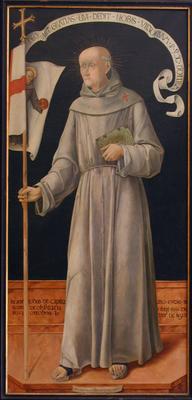
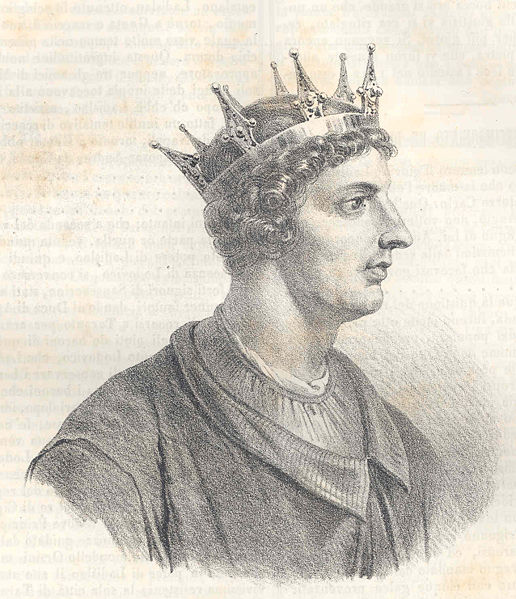
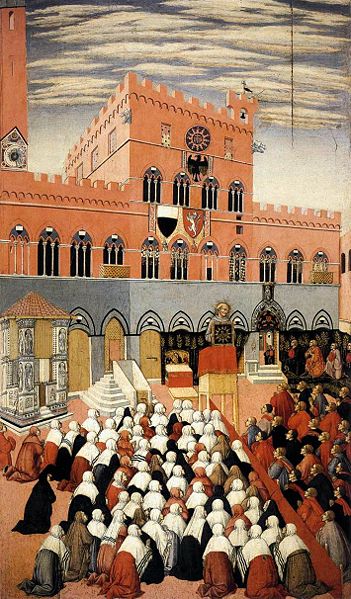
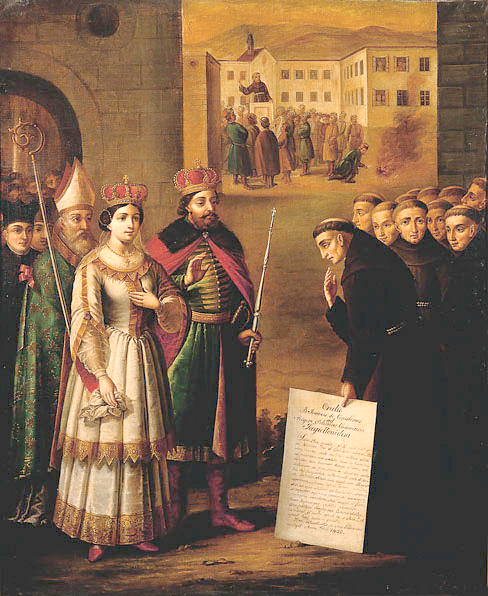
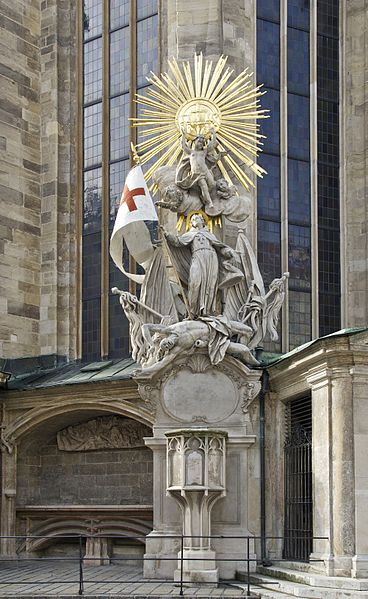
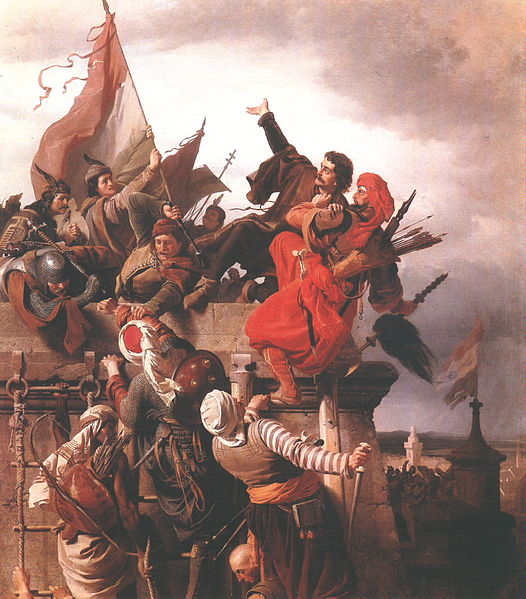



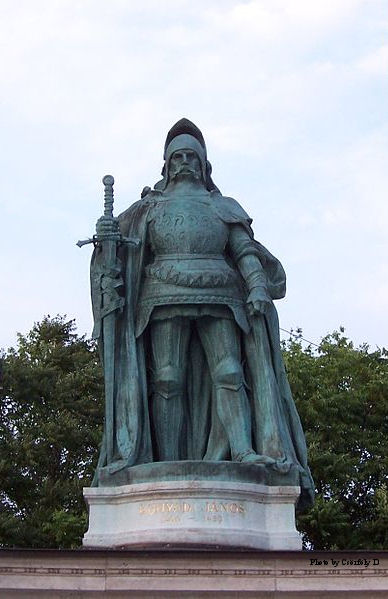
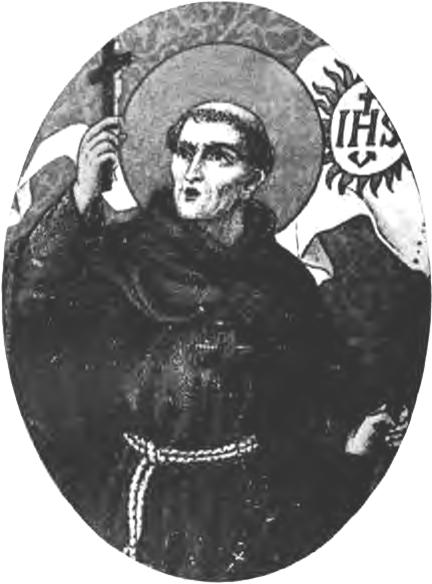
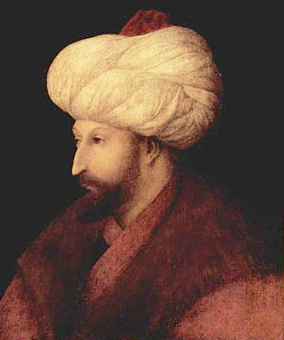

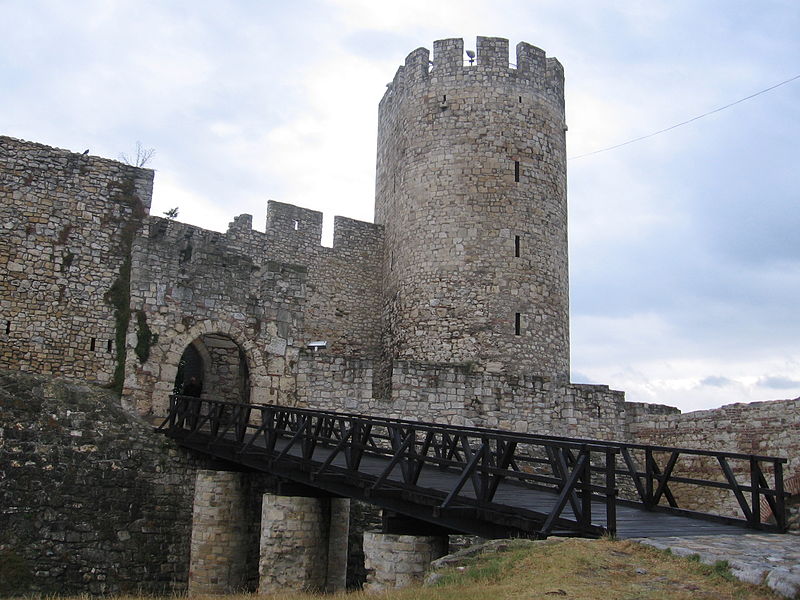
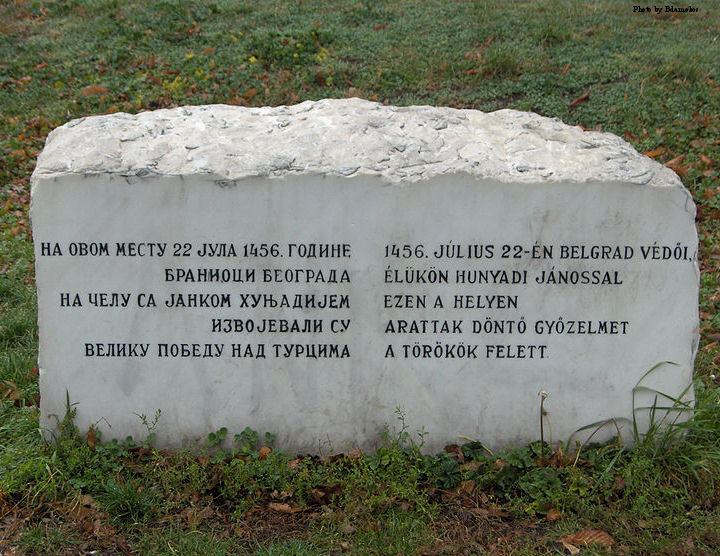
No comments:
Post a Comment